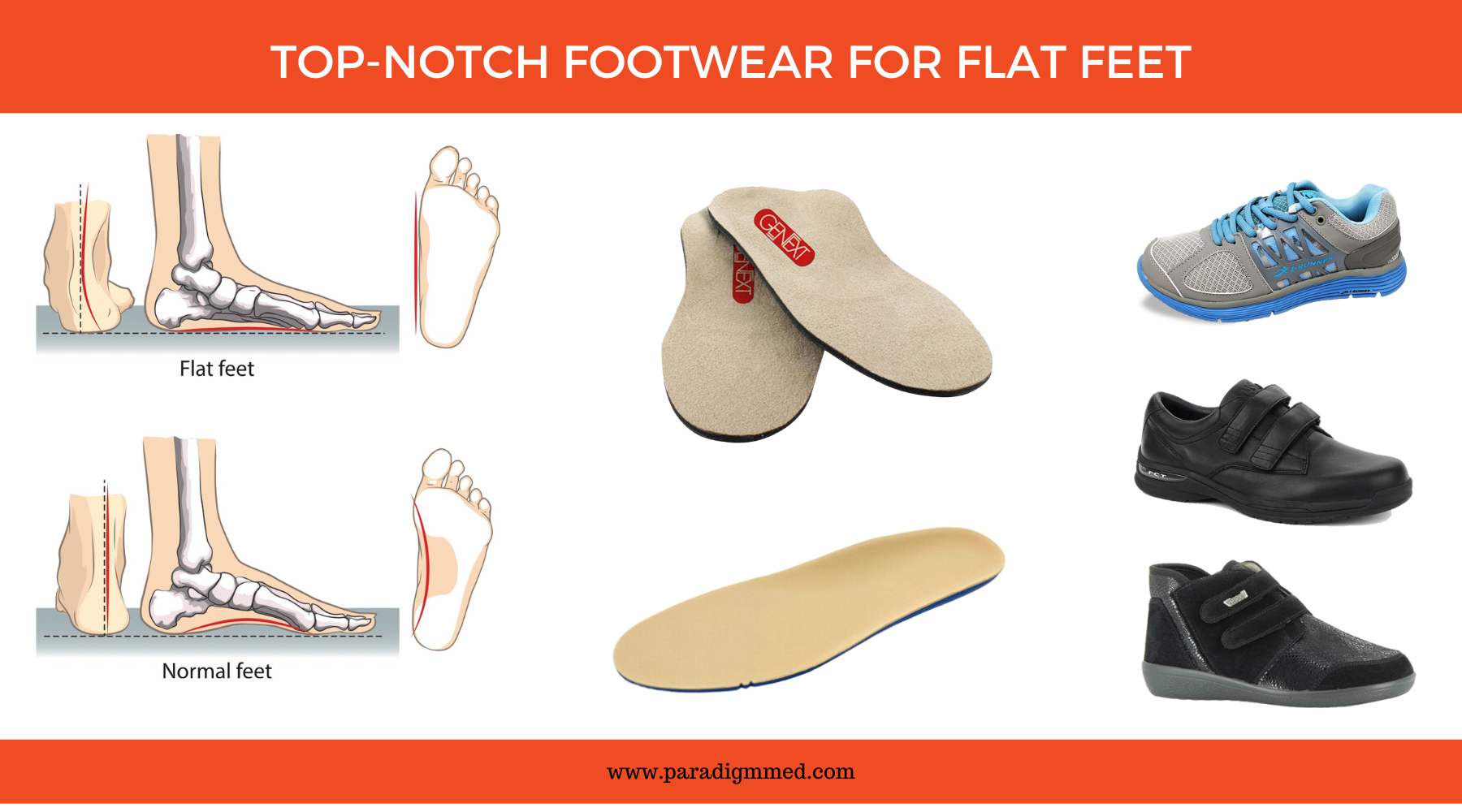Suffering from Flat Feet? We've Got You Covered.

WHY FLAT FEET ARE BAD FOR YOUR HEALTH
Flat feet occur when the arch of the foot is too low while in a standing position. Although the foot naturally flattens somewhat when it bears weight, flat feet retain little or no arch at all, putting the entire sole of the foot into contact with the ground. Flat feet are a common cause of foot, ankle, leg, and back pain due to insufficient support of the body’s weight during standing or movement.
Flat Feet can lead to:
Foot and Ankle Pain
Chronic Muscle Strain
Leg and Back Pain
Musculoskeletal Problems
- Paradigm Medical's range of top-notch Orthopedic Footwear feature premium orthotic insoles with anatomical arch support that prevent the foot from rolling inwards, stabilizing the foot, and enhancing comfort from heel to toe.
- They feature a firm heel counter along with wide, ergonomic soles to help increase stability and help prevent overpronation.
- The lightweight cushioning soles of these walking shoes for flat feet feature a mild rocker design that reduces impacts and improves the ease of walking.
- These flat feet shoes are engineered with extra depth, providing ample space for toe movements, and can accommodate custom orthotics.
Most shoes found in department stores and online are basic and have minimal features. Look for reputable, well-designed shoes to achieve proper alignment.
TOP FEATURES TO LOOK FOR WHEN CHOOSING ORTHOPEDIC FOOTWEAR
Orthotic support: footwear with removable insoles that can be replaced with custom inserts is an absolute must. They provide adjustability, customization, and the greatest support for arches. As a result, they will offer proper body alignment to ensure you walk correctly, minimize pain, discomfort, and the possibility of injuries.
Cushioning: the footbed should have shock-absorbing materials to cushion the foot against impact, conform to your feet, reduce pressure spots and provide energy return for increased pain relief.
Interior construction: seam-free interiors offer extra protection for those who have sensitive feet such as neuropathy, arthritis, and diabetes. Even a little thread can cause much irritation and be harmful to these types of feet!
Wide Toe box: a wide, round, and tall toe box offer ample space for the toes to move biomechanically, accommodate hammertoes and bunions and provide a relaxed fit even if your forefoot swells.
Extra-depth: this feature can make all the difference between shoes that are comfortable and ones that are not. The added depth runs from the heel to the toe area and creates a relaxed fit for edema if you have a high instep or wear thicker socks, or need to wear orthotics.
Outsole: look for a durable outsole to provide traction, stability and help you walk comfortably while reducing your risk of falls.
Durability: shoes constructed with durable upper materials will not fall apart or soil easily and are the best choice for all-weather conditions.
Adjustability: adjustability features such as laces, straps, and bungee cords will hold the feet securely in position and prevent sliding around, but also give the ability to tighten or loosen the fit around the instep or heel.
Best Orthopedic Shoes to Support Flat Feet and Alleviate Flat Foot Related Pain
Chaplin for Men
Leela for Women
Nevis Hook & Loop for Men
The Stretch Walker
For Men and Women

Lyon for Women
Genext Active Orthotics

BioFit Soft Multi Density Insoles
Order Top-Notch Orthopedic Footwear for Flat Feet HERE!











